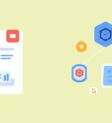
As digital content libraries expand, the need to automate internal linking has become an essential priority for website owners and SEO professionals. This article explores the evolution of internal linking, the rise of AI-powered tools, and practical approaches for seamlessly automating internal links to maximize SEO, user engagement, and site scalability.
The Evolution of Internal Linking: From Manual to Automated Solutions
Internal linking has always played a foundational role in website architecture and search engine optimization. In the early internet era, hyperlinks simply connected core web pages for easier navigation, benefitting both visitors and search engines. As websites expanded, manual internal linking—meticulously planning pathways and distributing link equity—became a labor-intensive process. SEO specialists performed exhaustive audits, striving to enhance crawlability and boost the visibility of valuable content.
However, the exponential growth of online content rendered manual strategies unsustainable. To keep pace, site owners began seeking automated solutions that ensure accuracy and scalability. Modern tools analyze an entire website, dynamically suggesting and adding internal links based on content relationships and SEO best practices. By shifting from manual to automated internal linking, webmasters can ensure every important page receives proper attention, strengthening both search visibility and the user experience.
How AI Agents Automate Internal Linking
Artificial intelligence (AI) is revolutionizing the way large, content-rich websites automate internal linking. Leveraging technologies such as natural language processing (NLP), entity recognition, and machine learning, AI-driven tools can scan entire sites and map content relationships by context, not just keywords.
AI agents recommend or insert internal links automatically, ensuring every connection is topically relevant and valuable for the audience. Unlike static or manual processes, these solutions update continuously, discovering opportunities as new content is added or old content refreshed. They can even identify and fix orphaned pages, fine-tune anchor text, and avoid over-linking, all while aligning linking strategies to a site’s unique architecture and conversion pathways. By adopting AI agents, organizations can drastically reduce the manual workload and prioritize impactful internal linking performance.
Benefits of Automating Internal Linking with AI
Embracing AI to automate internal linking brings a host of strategic advantages:
- Enhanced SEO Performance: By analyzing content and user behavior, AI identifies the most valuable interlinking opportunities, boosting crawlability, distributing link equity, and clarifying site structure for search engines. This leads to higher rankings and organic traffic.
- Significant Time Savings: Manual internal linking requires constant attention as a site grows. AI automates these tasks at scale, reducing human error and freeing marketing teams to focus on higher-level strategies.
- Effortless Scalability: As websites grow from dozens to thousands of pages, it becomes nearly impossible to manage interlinking manually. AI adapts in real-time, instantly updating links as new content appears, ensuring a continually optimized internal linking network.
- Consistent Site Structure: AI ensures linking strategies are implemented uniformly across the site, reinforcing branding, navigation, and user journey pathways for optimal outcomes.
Incorporating automation not only improves SEO, but also enhances the on-site user experience by guiding readers to the most logical and helpful next step in their journey. For broader perspectives on workflow automation, see our guide on automating your workflow using TheAgentBot.
Review of Top AI-Powered Internal Linking Tools
A range of specialized software solutions have emerged to help automate internal linking. Here are some of the market’s leading options and actionable steps to use them effectively:
- Clearscope: In addition to content optimization, Clearscope applies AI to recommend in-content internal links, increasing topical authority and navigation ease.
- Link Whisper: Tailored for WordPress, Link Whisper uses machine learning to scan posts and suggest relevant internal links, complete with analytics for anchor text and link patterns.
- SurferSEO: SurferSEO’s audit features highlight orphaned pages and suggest smart internal connections using AI-driven analysis, helping plug gaps in your site structure.
- Yoast SEO Premium: A favorite for on-page SEO, Yoast Premium uses NLP to generate actionable internal link suggestions while you edit or upload new pages.
How to Get Started:
1. Assess your website’s scale and needs to pick the right platform.
2. Complete installation and connect your content library.
3. Set link rules (frequency, exclusion, anchor text preferences).
4. Review, adjust, and approve link suggestions before deployment.
5. Monitor performance and modify settings as site priorities evolve.
For broader automation in administrative workflows, discover our recommendations on automating daily admin tasks.
Best Practices for AI-Driven Internal Linking
Effective AI-powered linking requires more than just software deployment. To maximize impact:
- Analyze Content with NLP: Use NLP models to understand contextual relationships, not just keywords. Prioritize links that flow naturally between broad topics and detailed supporting content.
- Prioritize User Intent: Guide visitors with links that anticipate their next logical question or interest, thereby reducing bounce rates and improving session duration.
- Rotate Anchor Text: Avoid overusing the same phrases; AI can help rotate anchor text for both SEO and improved readability.
- Conduct Regular Link Audits: Use AI to periodically audit your internal links, quickly flagging and fixing broken links, redundancies, or orphaned pages. Configure rules to cap excessive linking and direct link equity where it matters most.
- Iterative Refinement: Retrain AI models with updated site analytics, click-through rates, and user behavior data to keep linking logic current with evolving content and user needs.
Maintaining a clean, user-friendly internal linking architecture is critical for both SEO and audience retention. By following these best practices, your site can sustainably benefit from automation.
Case Studies & Future Trends in Automated Internal Linking
Companies across industries are reporting measurable SEO and engagement improvements after implementing AI to automate internal linking. For instance, a leading e-commerce retailer adopted AI-driven tools to analyze their product catalog and dynamically added highly relevant internal links. Within six months, they achieved a 22% increase in session duration and a 30% surge in organic traffic, attributed directly to automatic link placement and improved page discoverability.
Similarly, a digital publisher leveraged AI to study reader engagement and update internal links in real-time. The results included a 15% drop in bounce rate and a significant lift in long-tail keyword rankings. Such successes underscore the value of integrating intelligent linking tools into broader business automation strategies—more about this can be found in our insights on AI automation agencies.
Looking to the future, advances in AI will usher in even more sophisticated internal linking—anticipating user intent, personalizing links for individual visitors, and supporting new content formats like voice search and media-rich pages. Ongoing innovation is expected to further automate link audits, optimize anchor text, and make predictive recommendations, fundamentally changing the way internal linking supports website visibility and engagement.
For an authoritative external perspective on the future of AI in SEO, read this article from Search Engine Land.
Conclusion
As websites continue to grow and digital competition intensifies, the ability to automate internal linking stands out as a crucial strategy for maintaining SEO, user satisfaction, and operational efficiency. By leveraging AI-powered tools and best practices, site owners can ensure a sustainable, scalable, and results-driven internal linking architecture—paving the way for long-term digital success.






